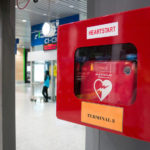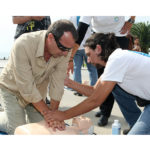Community Training
Having a community that is trained in CPR and equipped to handle a sudden cardiac arrest situation can be the difference between surviving or not. Our Community Training pages focus on ways to grow the readiness in any community to handle the next cardiac arrest episode and maybe save the life of someone that you know.
CPR Around the World

We want to help spread the word about your CPR training. Tell us about your upcoming event and we’ll add it to our list of resources.
Public Access Defibrillation (PAD) programs increase access to CPR training and place Automated External Defibrillators (AEDs) throughout a community. That way, if emergency responders can’t get to the scene quickly enough, bystanders have access to lifesaving equipment.
PAD Programs

PAD Programs

Public Access Defibrillation (PAD) programs increase access to CPR training and place Automated External Defibrillators (AEDs) throughout a community. That way, if emergency responders can’t get to the scene quickly enough, bystanders have access to lifesaving equipment.
Mobile CPR

By bringing CPR training and resources directly to the people who need them, mobile CPR programs are a convenient way to more easily reach large groups of people.
Approximately 75% of out-of-hospital cardiac arrests happen at home. More hospitals are providing CPR training to family members of high-risk patients prior to their hospital release, which helps increase both survival rates and peace of mind.
Families of High-Risk Patients

Families of High-Risk Patients

Approximately 75% of out-of-hospital cardiac arrests happen at home. More hospitals are providing CPR training to family members of high-risk patients prior to their hospital release, which helps increase both survival rates and peace of mind.
